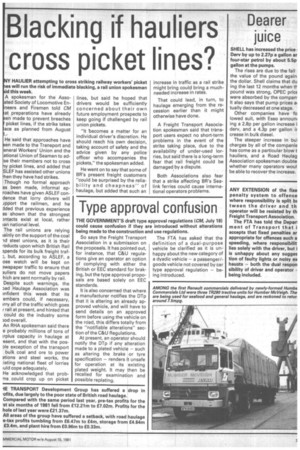Type approval confusion
Page 3

If you've noticed an error in this article please click here to report it so we can fix it.
THE GOVERNMENT'S draft type approval regulations (CM. July 18) could cause confusion if they are introduced without alterations being made to the construction and use regulations.
So says the Freight Transport Association in a submission on the proposals. It has pointed out, for instance, that C&U regulations give an operator an option of complying with either the British or EEC standard for braking, but the type approval proposals are based solely on EEC standards.
It is also concerned that where a manufacturer notifies the DTp that it is altering an already approved vehicle, and will have to send details on an approved form before using the vehicle on the road, this differs totally from the "notifiable alterations" section of the C&U Regulations.
At present, an operator should notify the DTp if any alteration made to a plated vehicle — such as altering the brake or tyre specification — renders it unsafe for operation at its existing plated weight. It may then be recalled for examination and possible replating. The FTA has asked that the definition of a dual-purpose vehicle be clarified as it is unhappy about the new category of a dyadic vehicle — a passenger/goods vehicle not covered by car type approval regulation — being introduced.




































